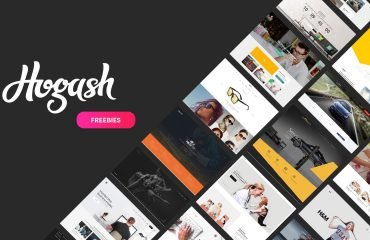Nowadays, ensuring great search engine rankings means creating websites that basically provide users with the answers they are looking for. To put it simply, SEO and UX work hand-in-hand to drive traffic to your website and increase conversions. SEO’s job is to get visitors to your site in the first place, and UX’s to ensure they have a great experience once they’re there.
Search engine algorithms are tricky little beasts, and to be honest, no-one quite knows what it is that makes them tick. One thing we are all aware of though is the fact that, while SEO used to be all about quantity, stuffing your copy with keywords no longer makes Google happy.
Interested in how you can combine SEO and UX in order to design websites that draw users in, entertain them and ultimately keep them coming back? Here are some tips you absolutely need to keep in mind:
Pay Attention to Page Speed
It may now seem like a bygone era (and in internet terms, it is), but not so long ago it wasn’t that rare to have to wait several minutes for a page to load. Thankfully, that’s no longer the case and users are now accustomed to websites that load smoothly and speedily.
Page speed is something that users value, and therefore so does Google. While we no longer expect to have time to make a cup of tea in the time it takes to load a webpage, some sites do load faster than others. However great your content is, if it’s clunky and takes time to load, your visitors will most likely just give up and try their luck elsewhere. This will contribute to a high bounce rate and in turn do a lot of damage to your rankings.
Ensure Your Website Contains Interactive Content
If people were really interested in consuming static content, they would go to the library and check out an encyclopedia. Ensure you engage visitors as active participants in their own user experience by providing content they can interact with, rather than just watch or read. Interactive content can mean quizzes, games, contest, calculators and more… Just use your imagination and get creative.
One of the biggest user experience evolutions in recent times is the move from graphical user interfaces (GUI) to conversational user interfaces (CUI), with the latter enabling user and software to interact via, you guessed it, conversation. Chatbots, for example, are an effective and easily implemented way to interact with users and help them find their way around your site and ultimately find the products and services they’re looking for.
Make Sure Your Website Is Responsive
Did you know that nowadays, mobile browsing makes up over half of the market share? Over the past year, browsing from a tablet or smartphone overtook desktop for the first time in the history of the Internet. While having a responsive website was once a sign as being ahead of the times, nowadays it’s an absolute necessity. In 2018, Google rolled out “mobile fast” browsing, meaning that it now favours websites that are designed for people who are browsing from mobile devices. With most people now preferring to do so, responsive web design is fundamental to providing a positive user experience and ensuring low bounce rates.
Optimize Your Website for Social Sharing
The jury is still out on just how much social media can boost your SEO. One thing is for sure, the amount your content is shared on social media won’t directly impact your rankings… But it will help you grow your brand audience, which will entail more traffic and greater engagement, as well as an increased number of searches for your brand. All things that will make Google sit up and take notice.
Here, we circle back to the necessity of optimizing your website for mobile and smartphone users. A poorly designed and clunky mobile experience will not only ensure a high bounce rate, but it will also decrease the amount that your content gets shared to social media. Make sure that your website is built to make social sharing easy, not only via clearly placed social sharing buttons, but also by creating the right kind of content.
Ensure Your Content Is Highly Readable
The content obviously plays a very big role in user experience as far as Google is concerned. Make sure that yours is as readable as possible, by using subheadings, bullet points, and numberings. It’s well-known that users have a short attention span when it comes to web content, but doesn’t mean however that all your copy has to be under 300 words: just make sure you stick to short paragraphs and avoid huge blocks of text. At the same time, ensure that your content has good grammar and correct spelling, and make it easier to read by using visuals and multimedia to break it up.
Talking of Visuals…
When it comes to search engine optimization, we tend to talk about written copy a lot. One thing that can get neglected is images, despite their increasingly important role when it comes to rankings. Try to avoid « visual noise » by using unique and relevant images that really bring something to your copy: users can be actively put off by continually seeing the same old stock photo again and again.
At the same time, ensure that your visuals aren’t too big and hinder page loading time, but remain crisp, clear and basically nice to look at. In order to reduce the file size without significantly affecting quality, you can use software such as Photoshop’s “Save for web” function. Naming your images descriptively and avoiding the default names assigned by your camera (don’t forget that search engines also crawl file image names) and remembering to optimize your alt attributes are also ways to keep Google happy.
So, there you have it: while you could make deducing the secrets of Google’s algorithms your life’s work, you’d probably do better to spend your time coming up with ways to make your website an appealing place to be.
Ultimately, good news for everyone involved!

Connect with us on social media.
Build your website with style!
Get access to this awesome drag & drop visual website builder, pre-made websites, thousands of features, video tutorials, premium support and many more.








